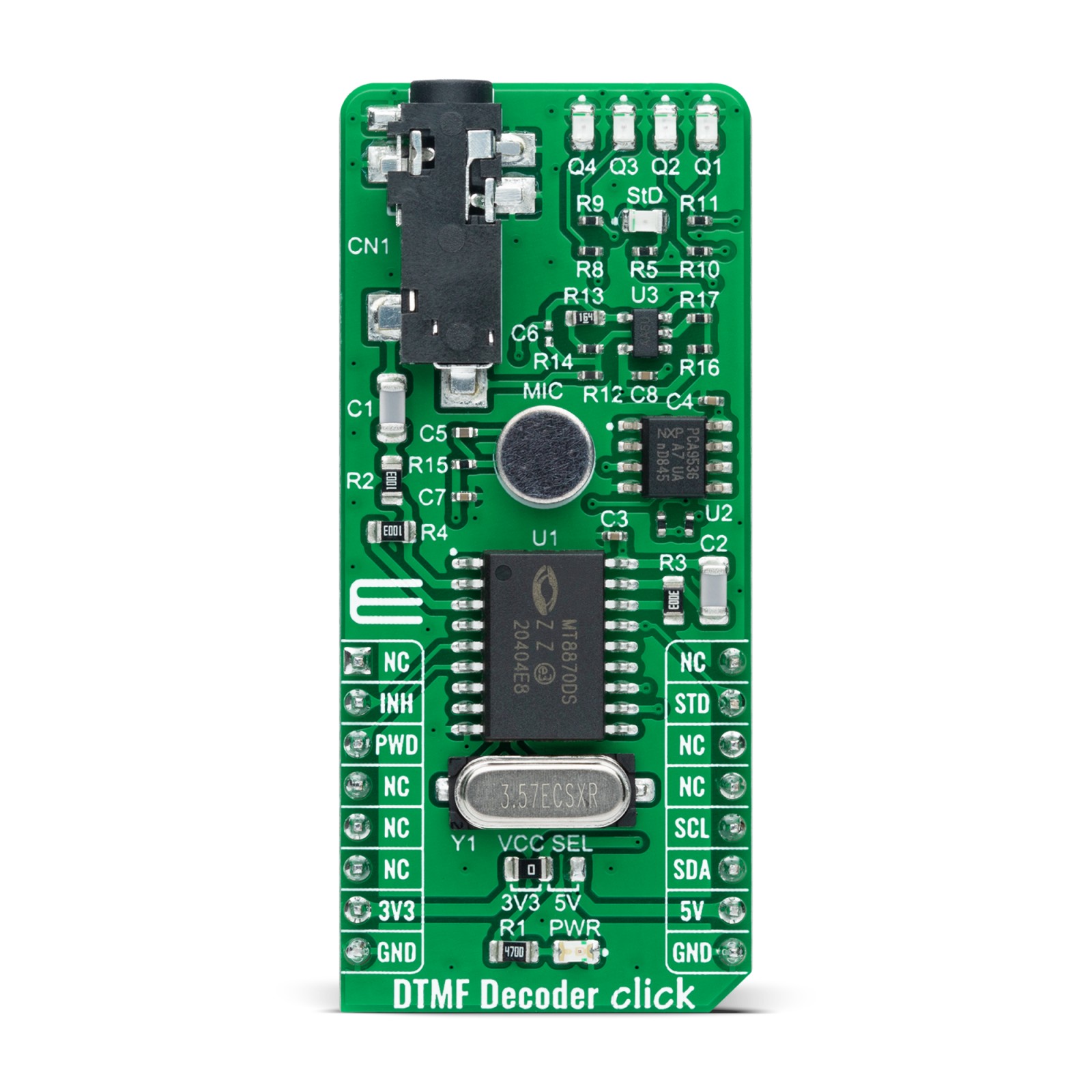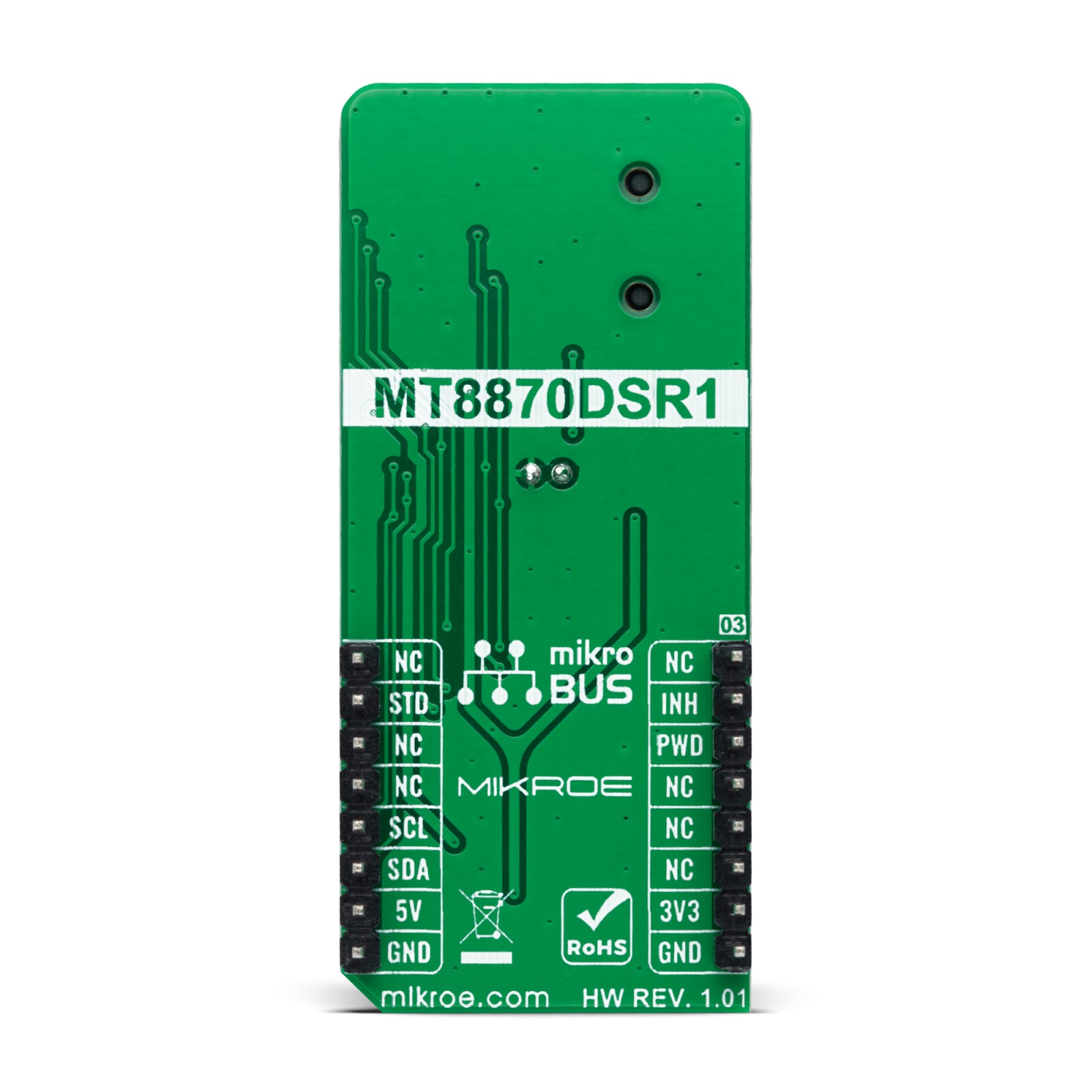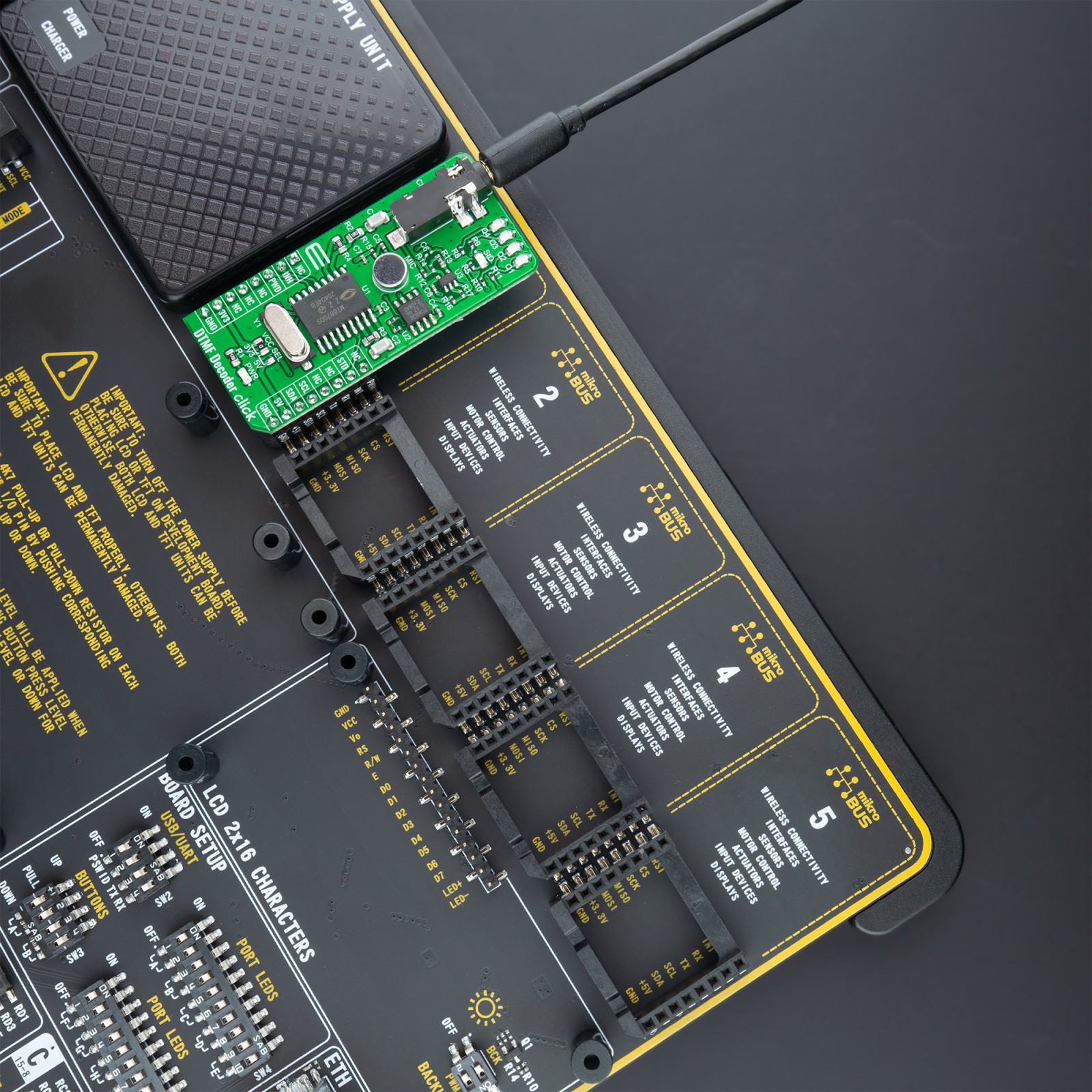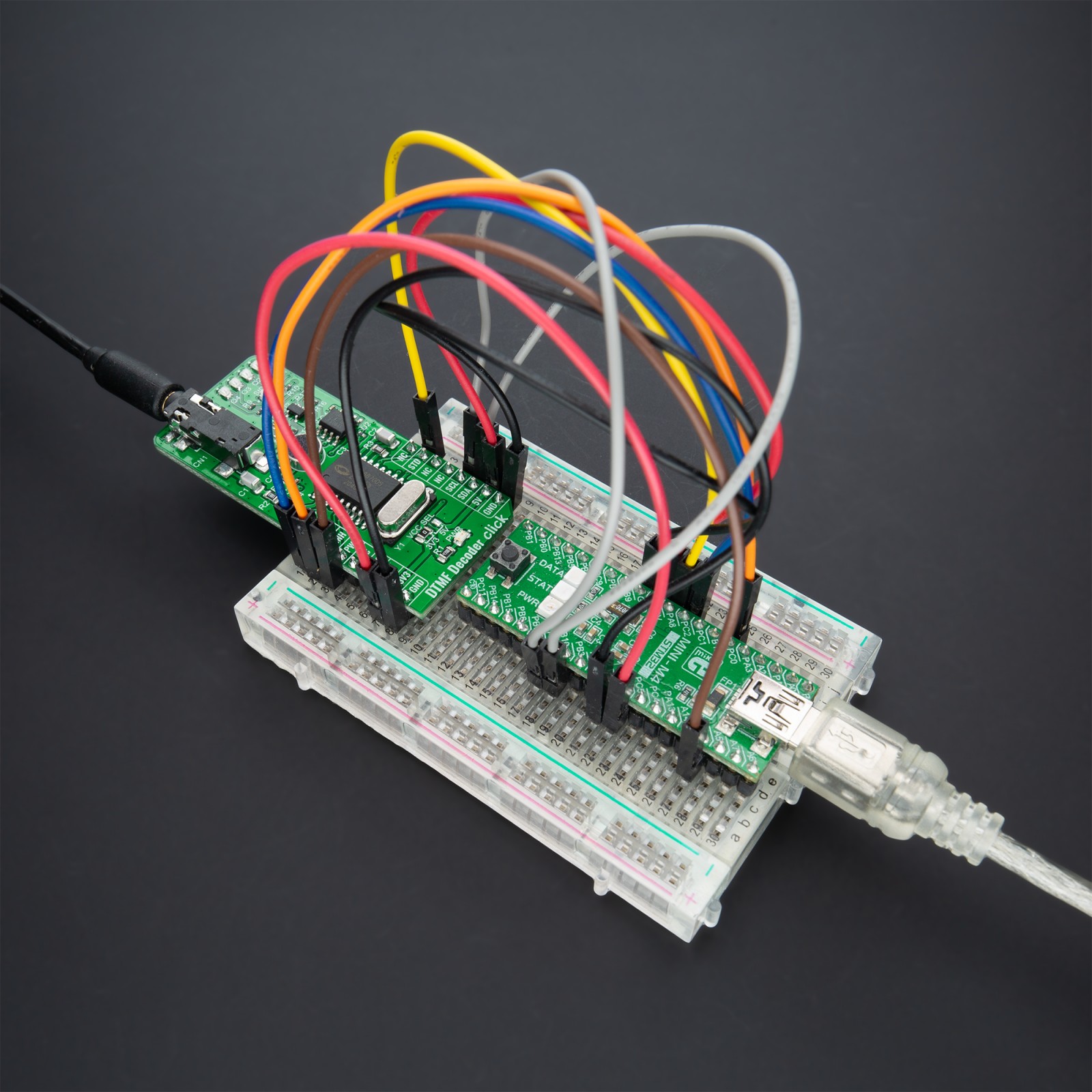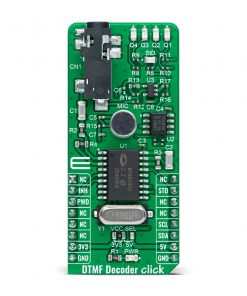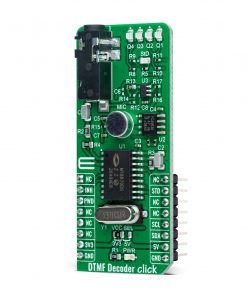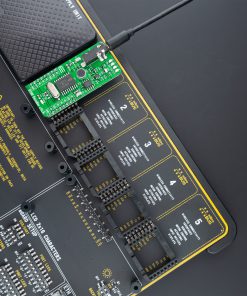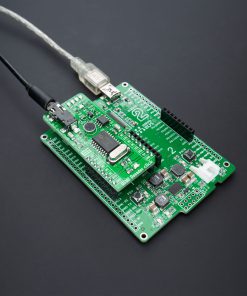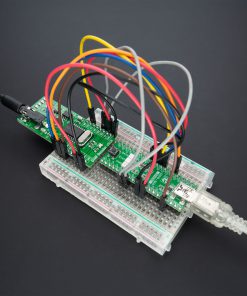DTMF Decoder Click is a compact add-on board that contains an integrated DTMF receiver with enhanced sensitivity. This board features the MT8870D, a complete DTMF receiver integrating the band-split filter and digital decoder functions from Microchip Technology. It offers low power consumption and high performance and uses digital counting techniques to detect and decode all 16 DTMF tone-pairs into a 4-bit code. Whenever a valid tone is detected, it outputs the associated value in binary on four LEDs, with an additional indicator that strobes after each new tone. This Click board™ is suitable for paging systems, remote control, electronic communications circuits, and various other applications.
DTMF Decoder Click is supported by a mikroSDK compliant library, which includes functions that simplify software development. This Click board™ comes as a fully tested product, ready to be used on a system equipped with the mikroBUS™ socket.
 DAC Click
1 × R410.00
DAC Click
1 × R410.00  METHANE Click
1 × R335.00
METHANE Click
1 × R335.00  BUZZ Click
1 × R115.00
BUZZ Click
1 × R115.00  Proximity Click
1 × R220.00
Proximity Click
1 × R220.00  HYDROGEN Click
1 × R335.00
HYDROGEN Click
1 × R335.00 
